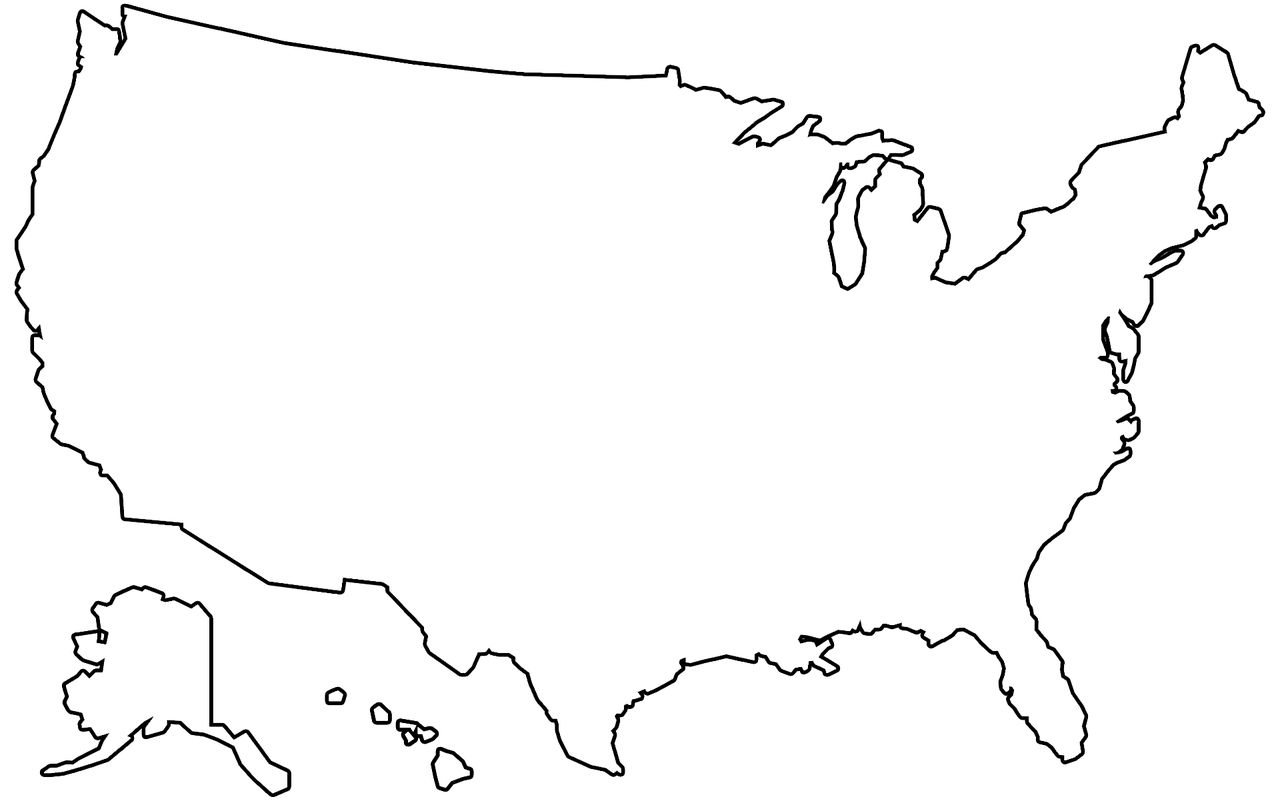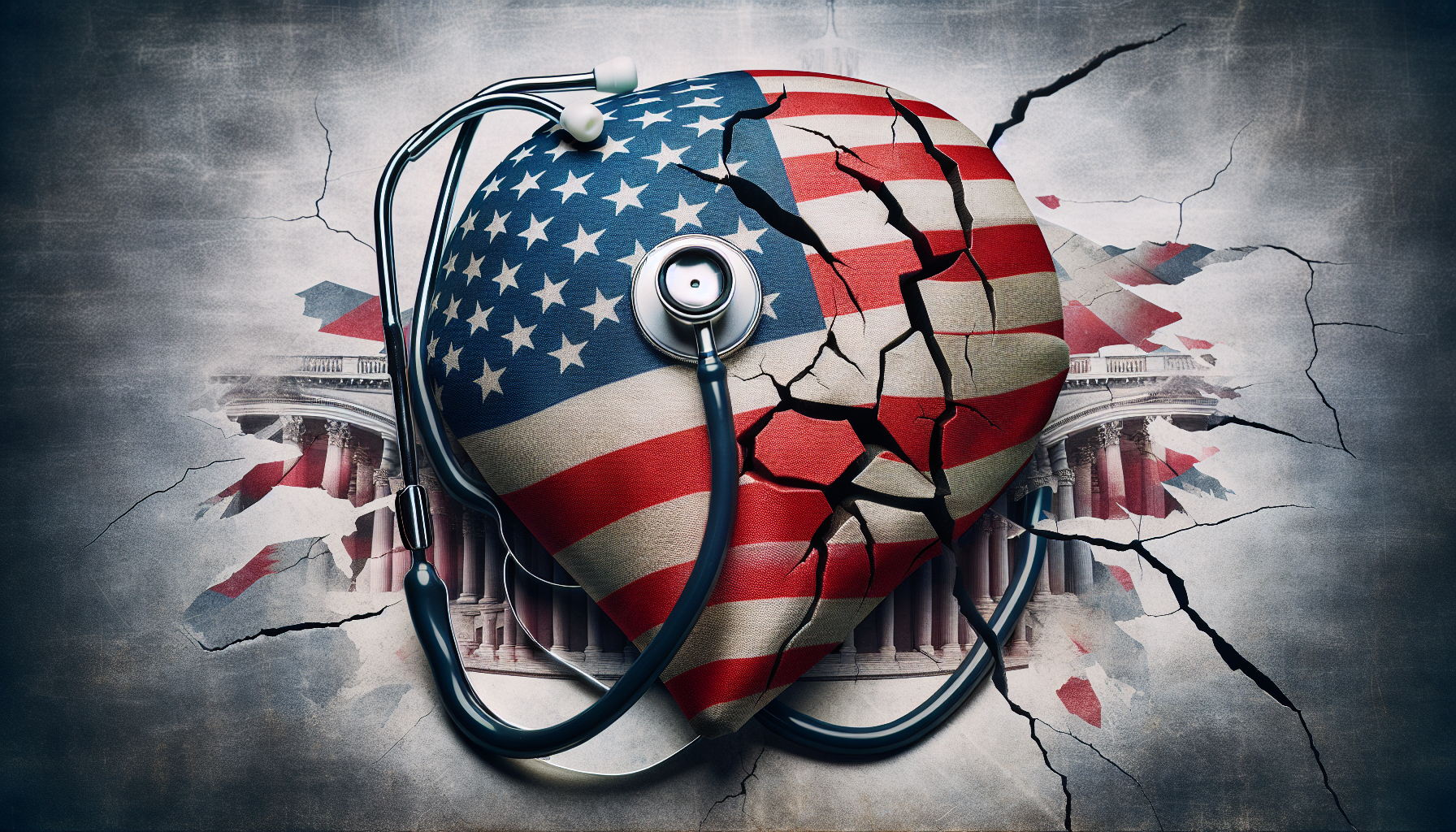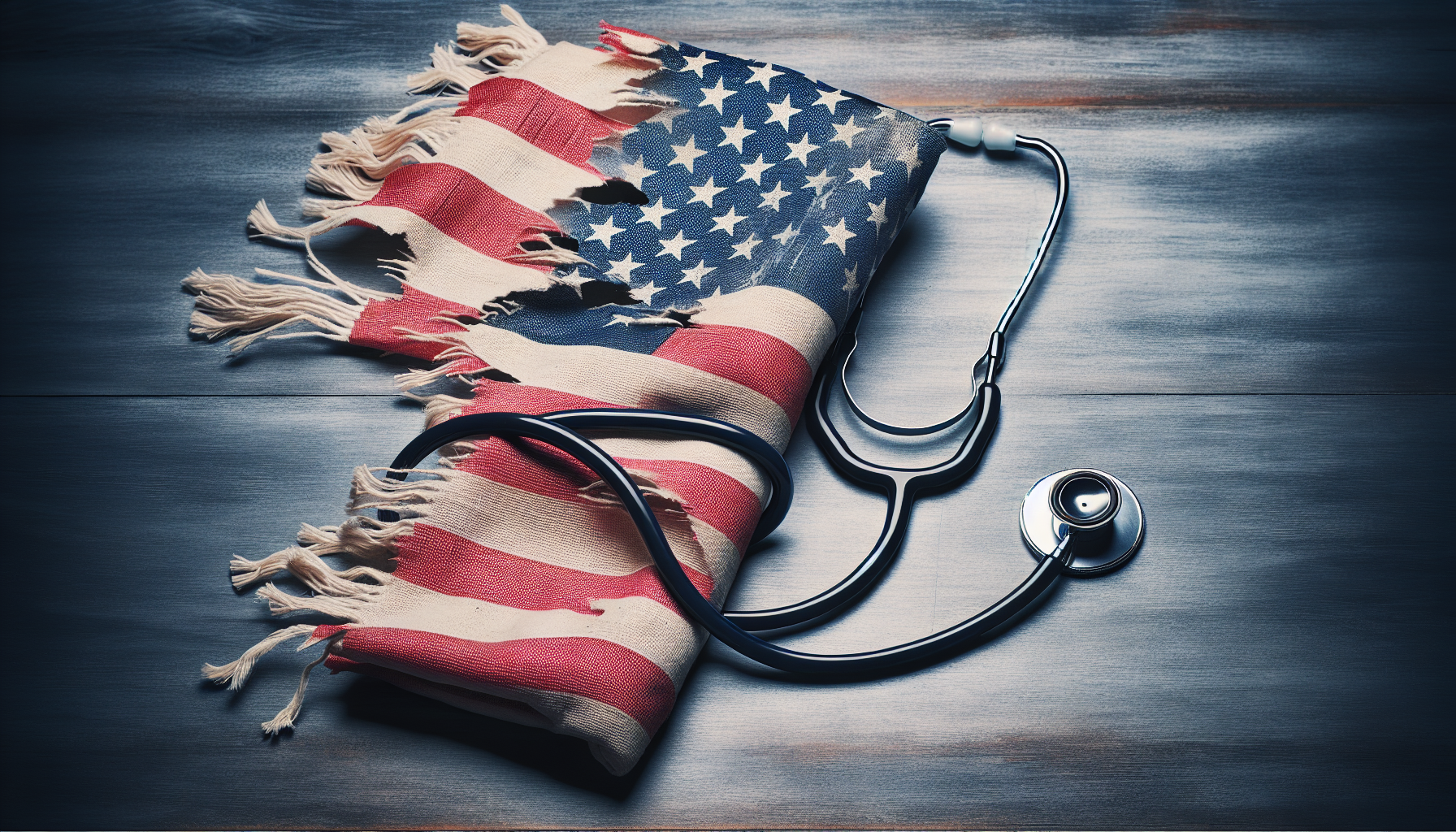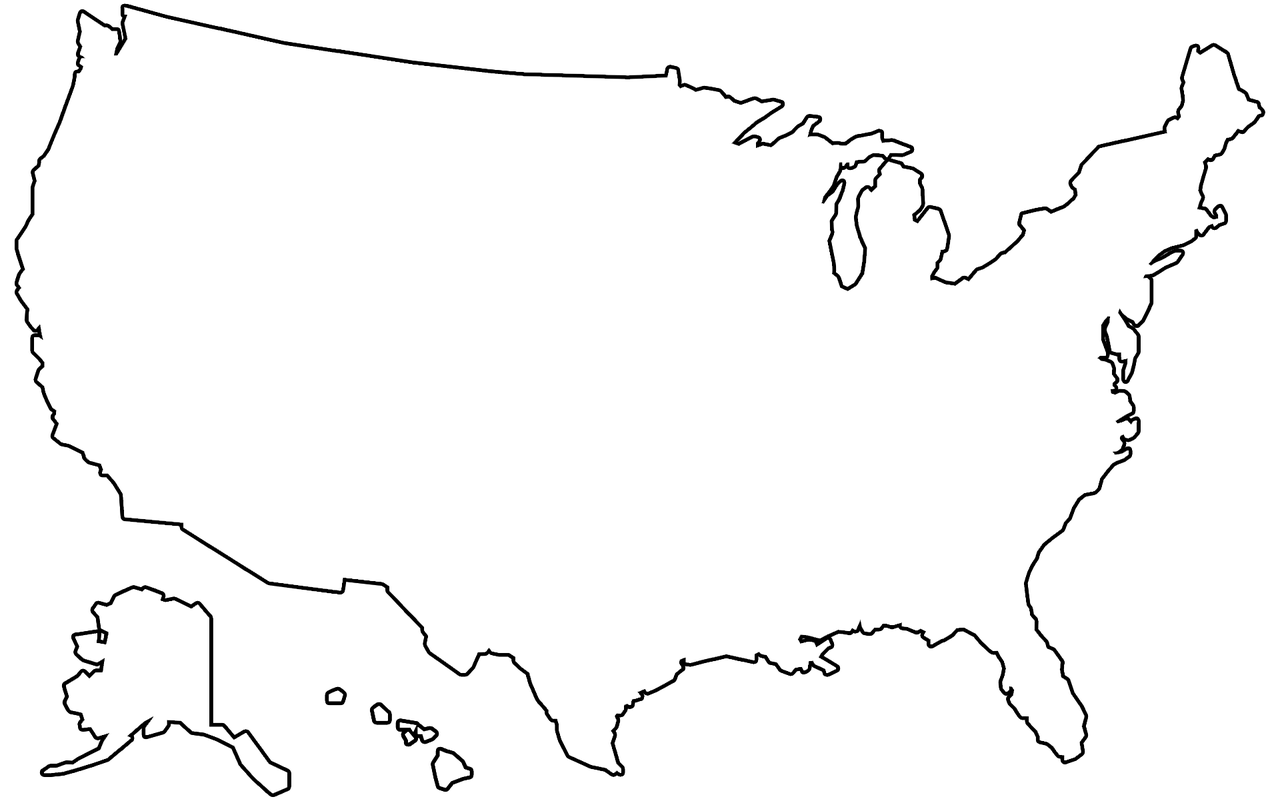Here’s why healthcare in the US is a problem. With rising costs, limited access, and a complicated system, many Americans find themselves struggling to navigate the healthcare landscape. From steep insurance premiums and exorbitant prescription drug prices to long wait times and a shortage of healthcare providers, the challenges faced by individuals and families are numerous. In this article, we’ll explore some of the key reasons why healthcare in the US presents a significant problem and discuss potential solutions that could improve the situation for all.
Lack of universal healthcare coverage
Uninsured population
One of the significant challenges in the US healthcare system is the lack of universal healthcare coverage. This means that not all individuals have access to health insurance, leaving a significant portion of the population without financial protection for medical expenses. According to recent statistics, around 28 million Americans are uninsured, which accounts for nearly 9% of the population. Without health insurance, individuals may have to bear the full burden of healthcare costs, which can be a significant barrier to accessing necessary medical care.
Underinsured population
Even among those who have health insurance, there is a growing underinsured population in the United States. Underinsurance refers to situations where people have insurance coverage, but the out-of-pocket costs, such as deductibles and copayments, are too high relative to their income. This leaves individuals with inadequate protection against medical expenses and can lead to financial strain or even medical debt. The underinsured population in the US is estimated to be around 44 million people, highlighting the limitations of the current healthcare system.
Inequality in access to healthcare
Another issue related to the lack of universal healthcare coverage is the inequality in access to healthcare. Certain populations, such as low-income individuals, racial and ethnic minorities, and rural residents, face greater barriers to healthcare services. Limited access to affordable healthcare leads to delayed or inadequate treatment, contributing to health disparities among different demographic groups. Addressing these inequalities and ensuring equal access to healthcare for all Americans is a critical challenge that needs to be tackled.
High healthcare costs
Rising insurance premiums
One of the reasons why healthcare in the US is a problem is the continuously rising insurance premiums. Health insurance, whether obtained through an employer or purchased individually, has become increasingly expensive. The rising premiums put a strain on individuals and families, making it harder for them to afford coverage. This forces some people to go without insurance or opt for insufficient coverage, putting their health and financial stability at risk.
Expensive medical procedures
Additionally, the cost of medical procedures in the US is significantly higher compared to other countries. From routine check-ups to complex surgeries, the prices charged by healthcare providers can be exorbitant. This high cost of medical procedures can deter people from seeking necessary healthcare, leading to delayed treatment or even worse health outcomes. The affordability of medical procedures is a critical aspect of healthcare accessibility, and addressing this issue is crucial for improving the overall healthcare system in the US.
Pharmaceutical drug prices
The cost of prescription drugs is another major concern in the US healthcare system. Americans often pay significantly more for medications compared to residents of other countries. The high prices of prescription drugs can make it unaffordable for individuals to obtain the necessary medications, leading to medication non-adherence and potential negative health consequences. The skyrocketing prices of drugs, especially for essential medications, create a significant financial burden on individuals and families, further exacerbating the healthcare problem in the US.

Fragmented healthcare system
Complexity of insurance
The US healthcare system is known for its complexity, particularly in terms of insurance. Navigating the intricacies of insurance coverage, understanding the various plans, dealing with copays and deductibles, and managing paperwork can be overwhelming for many individuals. The complexity of insurance often leads to confusion and can result in people not fully understanding their coverage or benefits. This can lead to individuals forgoing necessary medical care or facing unexpected healthcare costs, further contributing to the challenges in the US healthcare system.
Lack of coordination and continuity of care
Another issue within the fragmented US healthcare system is the lack of coordination and continuity of care. Due to the involvement of multiple healthcare providers, hospitals, specialists, and insurance companies, the coordination of patient care can be challenging. Lack of communication and information sharing between healthcare providers can lead to fragmented care, medical errors, and inefficiencies. Additionally, patients with chronic conditions or complex medical needs may struggle to receive continuous and coordinated care, leading to suboptimal healthcare outcomes. Addressing the issue of coordination and continuity of care is essential for improving the overall quality and effectiveness of the US healthcare system.
Inefficiency in healthcare delivery
Administrative burdens
The US healthcare system is burdened with significant administrative tasks and paperwork, which can contribute to inefficiency and increased costs. Healthcare providers and facilities must spend considerable time, resources, and manpower on administrative tasks such as billing, coding, and insurance claims. This administrative burden takes away valuable time that could be dedicated to patient care and can lead to increased healthcare costs due to the additional administrative overhead. Simplifying administrative processes and reducing burdensome paperwork can enhance the efficiency of healthcare delivery in the US.
Inadequate use of technology
Although the US is known for its technological advancements, the healthcare system has been relatively slow in adopting and effectively utilizing technology. Outdated or insufficient use of technology can lead to inefficiencies, medical errors, and difficulties in accessing patient information. For example, the lack of electronic health records and interoperability between different healthcare systems can result in delays in accessing crucial medical information, duplication of tests, and a fragmented view of a patient’s health history. Embracing and integrating technology into the healthcare system can improve efficiency, reduce errors, and enhance patient care.
Overutilization and overpricing of services
The US healthcare system faces challenges with overutilization and overpricing of services. The fee-for-service model, which incentivizes the volume of services provided rather than the quality of care, can lead to unnecessary tests, procedures, and treatments. Overutilization of healthcare services not only increases healthcare costs but can also result in potential harm to patients through unnecessary interventions. Moreover, some services and treatments are incredibly overpriced, contributing to the overall high cost of healthcare in the US. Addressing overutilization and ensuring fair pricing of services are crucial steps toward achieving a more efficient and cost-effective healthcare system.

Healthcare disparities among different populations
Racial and ethnic disparities
Healthcare disparities based on race and ethnicity continue to persist in the US. Minorities, particularly African Americans, Hispanics, and Native Americans, often face barriers to accessing quality healthcare. These disparities can result from various factors, including discrimination, limited access to healthcare facilities, cultural differences, and socioeconomic challenges. Addressing these racial and ethnic disparities requires implementing targeted interventions, promoting cultural sensitivity among healthcare providers, and improving equity in healthcare access and delivery.
Geographical disparities
Disparities in healthcare access and quality are not limited to racial and ethnic factors but also manifest geographically. Rural areas, for instance, often face challenges in accessing healthcare services due to limited healthcare facilities, shortage of healthcare professionals, and long distances to travel for care. This lack of accessibility can result in delayed or inadequate treatment, leading to poorer health outcomes. Bridging the geographical disparities in healthcare requires implementing innovative healthcare delivery models, improving healthcare infrastructure in rural areas, and addressing the shortage of healthcare providers.
Gender disparities
Gender disparities in healthcare also exist within the US system. Women, for instance, face unique healthcare needs related to reproductive health, including pregnancy, childbirth, and menopause. However, access to affordable and comprehensive reproductive healthcare services, including contraception, family planning, and prenatal care, can be challenging for many women. Gender disparities can also be seen in terms of healthcare research, with historically less focus on women’s health in medical studies. Addressing gender disparities in healthcare requires policies that prioritize women’s health needs, funding for research on women’s health, and greater access to affordable reproductive healthcare services for all women.
Provider shortages and maldistribution
Shortage of primary care physicians
One of the key challenges in the US healthcare system is the shortage of primary care physicians. Primary care providers play a crucial role in preventive care, early detection of diseases, and managing chronic conditions. However, there is an insufficient number of primary care physicians to meet the growing demand for healthcare services. This shortage leads to longer wait times for appointments, reduced access to primary care in underserved areas, and an increased burden on emergency departments. Addressing the primary care physician shortage requires expanding medical education programs, promoting primary care as a viable career choice, and implementing incentive programs to encourage physicians to practice in underserved areas.
Maldistribution of healthcare professionals
In addition to the shortage of primary care physicians, there is also a maldistribution of healthcare professionals in the US. Certain areas, particularly rural and economically disadvantaged regions, face a scarcity of healthcare professionals, including specialists and nurses. This maldistribution exacerbates healthcare disparities and limits access to specialized care for those in need. Incentivizing healthcare professionals to practice in underserved areas, providing education and training opportunities in rural communities, and improving the financial viability of healthcare facilities in these regions can help address the issue of maldistribution.
Impact on rural areas
The shortage and maldistribution of healthcare providers have a significant impact on rural areas. Rural communities often struggle to access essential healthcare services due to limited availability of healthcare facilities and long distances to travel for care. This lack of access to healthcare can result in delayed diagnosis and treatment, increased transportation costs, and poorer health outcomes. Supporting the healthcare infrastructure in rural areas, incentivizing healthcare professionals to practice in these regions, and embracing telehealth and other innovative approaches can help alleviate the healthcare challenges faced by rural communities.

Challenges in quality and patient safety
Medical errors and avoidable harm
Quality and patient safety are essential aspects of a well-functioning healthcare system. However, the US faces challenges in this regard, with medical errors and avoidable harm occurring too frequently. Medical errors can range from medication errors, misdiagnoses, surgical errors, to infections acquired during hospital stays. These errors can lead to adverse patient outcomes, complications, and even death. Addressing medical errors requires an emphasis on patient safety in healthcare organizations, implementing standardized practices and protocols, and promoting continuous quality improvement initiatives.
Variations in quality of care
There are significant variations in the quality of care provided across different healthcare settings and regions in the US. Differences may arise from variations in healthcare practices, provider knowledge and expertise, and access to resources. These variations can result in disparities in health outcomes and patient satisfaction. Implementing evidence-based guidelines, promoting transparency in quality reporting, and fostering a culture of continuous quality improvement can help minimize variations and improve the overall quality of care.
Insufficient patient-centered care
Another challenge in the US healthcare system is the insufficient focus on patient-centered care. Patient-centered care emphasizes the involvement of patients in their care decisions, tailoring treatments to individual needs, and considering patients’ values and preferences. However, the healthcare system often falls short in truly engaging patients and providing personalized care. Improving patient-centered care requires a shift in the healthcare culture, fostering effective patient-provider communication, and integrating shared decision-making practices into clinical encounters.
Limited focus on preventive care and public health
Emphasis on acute care
The US healthcare system has historically placed a greater emphasis on acute care rather than preventive care. While acute care focuses on the treatment of illnesses and injuries, preventive care aims to prevent or detect diseases before they become severe. The limited focus on preventive care can lead to missed opportunities for early intervention, resulting in more complex and costly healthcare interventions later. Shifting the focus toward preventive care can lead to better health outcomes, reduced healthcare costs, and improved overall population health.
Insufficient investment in public health infrastructure
Furthermore, public health infrastructure in the US often suffers from insufficient investment. Public health efforts, such as disease surveillance, vaccination programs, health education, and emergency preparedness, play a crucial role in preventing and managing public health crises. However, limited funding and resources for public health agencies can hinder their capacity to effectively respond to emerging threats and protect population health. Increasing investment in public health infrastructure is essential for enhancing disease prevention, promoting health education, and ensuring effective responses to public health emergencies.
Inadequate preventive measures
The US healthcare system faces challenges in promoting and implementing adequate preventive measures. While preventive services, such as vaccinations and screenings, are available, barriers such as cost, awareness, and access limit their utilization. Additionally, lifestyle factors, such as poor nutrition, sedentary behavior, and tobacco use, contribute to the burden of preventable diseases. Strengthening preventive measures requires increasing awareness and education about the importance of prevention, reducing barriers to access and affordability of preventive services, and implementing policies that create supportive environments for healthy behaviors.

Lack of transparency and information sharing
Difficulty in obtaining healthcare price information
Transparency in healthcare pricing is a significant issue in the US. Many patients find it challenging to obtain clear and comprehensive information about the cost of healthcare services. This lack of transparency makes it difficult for individuals to make informed decisions regarding their healthcare and compare prices across different providers. The complex pricing structures in the healthcare system contribute to financial burdens and surprise medical bills. Improving healthcare price transparency can empower patients to make cost-effective healthcare choices and promote competition among healthcare providers.
Inadequate sharing of medical records
Another aspect in which the US healthcare system lags is the sharing of medical records. Patient medical records are often not easily accessible or transferable across different healthcare settings, leading to fragmented care and potential medical errors. The lack of interoperability and standardized electronic health records can result in delays in care, duplication of tests, and gaps in medical history, impacting patient safety and care quality. Enhancing the sharing of medical records through secure and interoperable electronic health systems can improve care coordination and facilitate seamless healthcare delivery.
Limited access to healthcare data
Access to comprehensive healthcare data is vital for research, quality improvement, and public health surveillance. However, the US healthcare system faces challenges in data sharing and accessibility. Privacy concerns, legal constraints, and a fragmented data infrastructure limit the availability and usability of healthcare data for various stakeholders. Establishing robust data governance frameworks, ensuring secure data sharing practices, and promoting data collaboration among healthcare providers, researchers, and public health agencies can unlock the potential of healthcare data and drive improvements in care delivery, research, and population health.
Political and policy challenges
Partisan debates on healthcare reform
The US healthcare system is not only plagued by practical challenges but also by political and policy challenges. Healthcare reform in the US has become a polarizing and contentious topic, leading to partisan debates. Different political ideologies and interests complicate the implementation of comprehensive healthcare policies, hindering progress and leaving many unresolved issues in the system. Finding common ground and fostering bipartisan approaches to healthcare reform is crucial for addressing the challenges and moving towards a more efficient, affordable, and accessible healthcare system.
Resistance to change
Resistance to change is a significant obstacle in improving the US healthcare system. The existing infrastructure, financial interests, and entrenched practices often create resistance to implementing necessary reforms and innovative approaches. Many stakeholders, including healthcare providers, insurance companies, and pharmaceutical companies, may resist changes that potentially could impact their profits or established practices. Overcoming resistance to change requires effective communication, stakeholder engagement, and a shared understanding of the importance of transformation for the betterment of the healthcare system and the well-being of all Americans.
Influence of special interest groups
Special interest groups, such as healthcare industry lobbyists and advocacy organizations, have significant influence on healthcare policies and decision-making. The interests and priorities of these groups can shape healthcare legislation and influence resource allocation, potentially leading to biased or skewed healthcare policies. Balancing the influence of special interest groups with the needs and preferences of the general population is vital for ensuring that healthcare policies prioritize the best interests of all Americans. Transparency in political contributions, robust ethics guidelines, and strong public engagement can help mitigate the undue influence of special interest groups and promote a more equitable healthcare system.
In conclusion, the US healthcare system faces a multitude of challenges that contribute to the overall problem of healthcare in the country. The lack of universal healthcare coverage, high healthcare costs, a fragmented healthcare system, inefficiency in healthcare delivery, healthcare disparities among different populations, provider shortages and maldistribution, challenges in quality and patient safety, limited focus on preventive care and public health, lack of transparency and information sharing, and political and policy challenges all play a role in the complexities of the US healthcare system. Addressing these challenges will require comprehensive reforms, collaboration among all stakeholders, and a commitment to creating a healthcare system that is accessible, affordable, and provides high-quality care for all Americans.


